This tutorial is a companion to the backhand block vs loop – side view tutorial, but showing a front view perspective instead. Rather than repeat much of the side view version, I’ll just be pointing out items that are relevant to the front view.
Ready Position
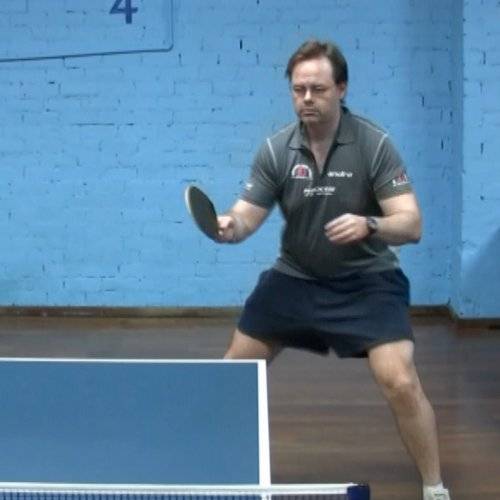
© Greg Letts
Points to look for:
- Since the player is practicing a backhand block vs loop drill, his racket is slightly tilted to favor his backhand block. In a block vs loop drill with random loop placement, his racket edge would be perpendicular to the floor.
- The feet are placed with the right foot slightly further back than the left foot.
- The knees are bent and the feet are around one and a half times shoulder width apart.
- The arms are held roughly shoulder width apart, with around a 90 degree angle at the elbow.
- The player is well balanced to move in any direction and play any stroke that is required, even though he is expecting to perform a backhand block.
Start Of Backswing

© Greg Letts
The ball is coming to the backhand side and the decision has been made to play a backhand block. The backswing begins the stroke.
Points to look for:
- The bat has been moved backwards and downwards by rotating the right forearm around the elbow joint.
- The player has been photographed in “mid-hop”, as he was staying bouncy on his toes to aid his ability to move in any direction. He will drop down a few inches into his preferred playing position in the next photograph.
- The left arm has not moved significantly, and will not do so throughout the stroke. There is no body turn or movement forward or back required during this stroke, so it is left in position to help maintain balance.
End Of Backswing
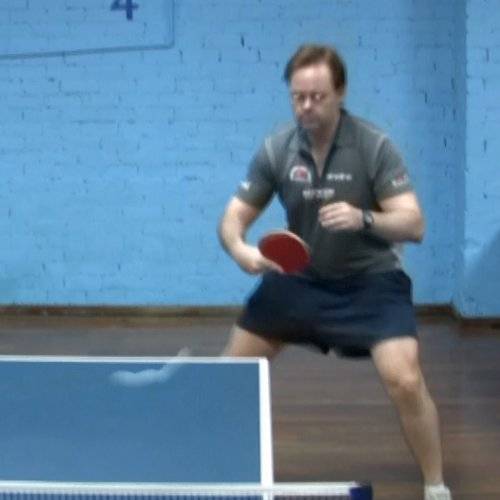
© Greg Letts
The ball has bounced on the table, and the backswing has finished.
Points to look for:
- The body weight has remained evenly balanced on both legs, since the player was in very good position to return the ball, and has not needed to move or lean to either side.
- The tip of the racket is now pointing to the left of the player. He has estimated that the ball will not have a heavy amount of topspin, and as such has decided that he does not need to close the racket face very much, so there is only a slight tilt forward of the racket.
- As mentioned previously, the player has dropped down a few more inches towards his preferred height to play the ball.
- The racket is now directly in the ball’s flight path as estimated by the player. Since he is playing a control block rather than a more powerful aggressive block, he will not move the bat forward significantly before making contact with the ball.
- The player is watching the bounce of the ball carefully, since he will need to change his racket position to adjust for any last moment changes in the bounce or flight of the ball.
Contact With The Ball

© Greg Letts
Contact has been made with the ball.
Points to look for:
- The player has only moved the racket a few inches forward from its position at the end of the backswing. This is because he is controlling the ball and using his opponent’s pace to help return it, rather than significantly adding to the pace on the ball with his own forward swing.
- The rest of the player’s body is still (the blurring is caused by the opponent’s impact with the sprung wooden floor, which is shaking the camera tripod).
- The player is maintaining the racket angle that he has chosen, since changing the racket angle at this point would only increase the chances of making a mistake.
Start Of Follow Through
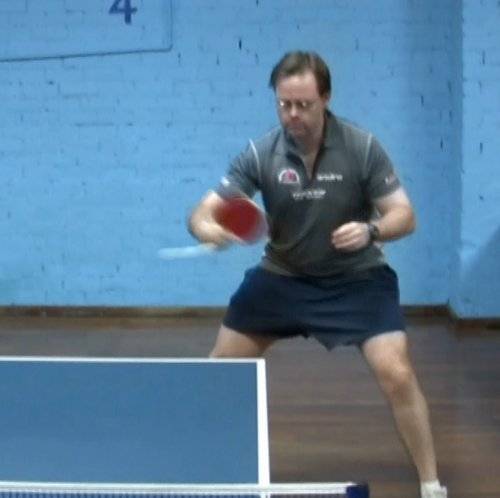
© Greg Letts
The ball is on its way to the opponent, and the player is in the middle of his follow through.
Points to look for:
- The player has used a slight upwards and forwards movement in his upper arm and from his right elbow, which has allowed him to continue moving the racket forwards and upwards without changing the racket angle significantly. This increases the chances of the player making a good block, even if he mistimes the stroke slightly.
- The player is now beginning to push up out of his crouch.
- The blur trail of the ball clearly shows that it is moving forwards and very fractionally downwards at this point. The player has correctly judged the amount of spin on the ball, resulting in a flat flight path on his return ball which will travel low over the net.
End Of Follow Through
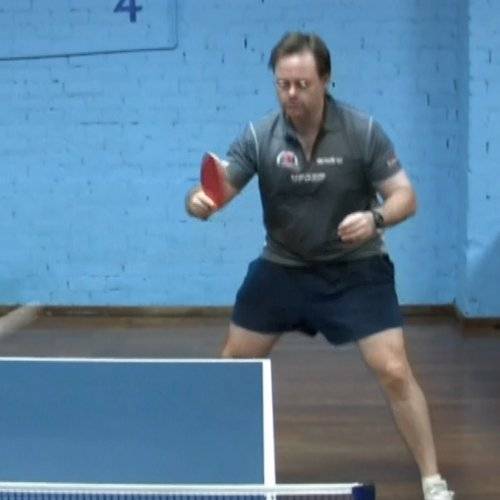
© Greg Letts
The forward swing has come to an end, and the ball is on its way.
Points to look for:
- The player has continued to push up out of his crouch, and will use the momentum to help him “hop” into position for the next stroke, and stay light on his toes.
- There is very little follow through, and the overall stroke is probably not much more than a foot and a half long at best.
- The player is still looking at the contact point of the ball, rather than watching the flight of the ball itself. This helps to keep the head still at contact.
Start Of Return To Ready Position
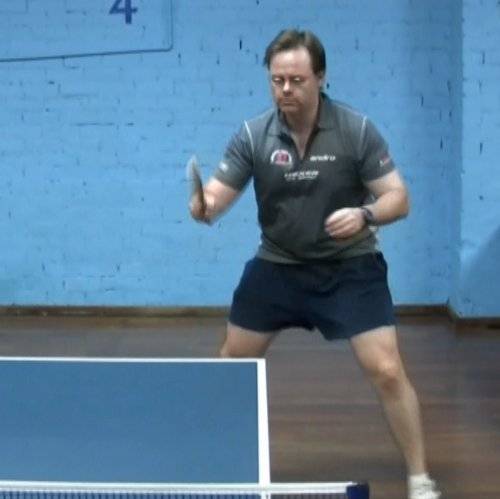
© Greg Letts
The ball is on its way over the net, and the player is now returning to his basic ready position.
Points to look for:
- The player is now at the peak of straightening up, and will sink down into a crouch again as he stays bouncy on his toes.
- The player is returning his racket to a neutral position by bringing his right elbow back towards his body a little, and by straightening out his wrist. He has also returned the racket edge to a fairly straight up and down position, albeit with a very slight backhand emphasis.
- All the player really needs to do now is to lower his right arm from the shoulder joint a little, which will bring the racket down a few inches and backwards a few inches, back into the original starting position.
- Even at this point, the player has not yet lifted his head to watch his opponent play the ball.
Return To Ready Position
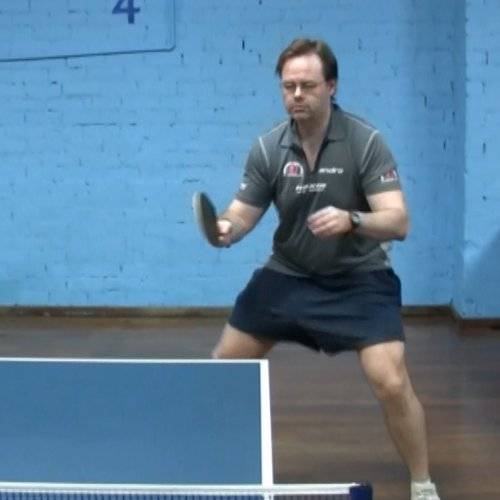
© Greg Letts
The player has now returned to his ready position.
Points to look for:
- The player has dropped back into a slight crouch, since he is at the low point of bouncing on his toes.
- As mentioned previously, he has dropped his right arm from the shoulder joint, and now the racket is back at the same height as his free arm and hand.
- The player has finally lifted his head, and is now watching the opponent play his next stroke.
- Since the opponent has not yet played his stroke, the player is maintaining an excellent neutral waiting position, from which he can move in any direction quickly, and play any stroke that is required.

